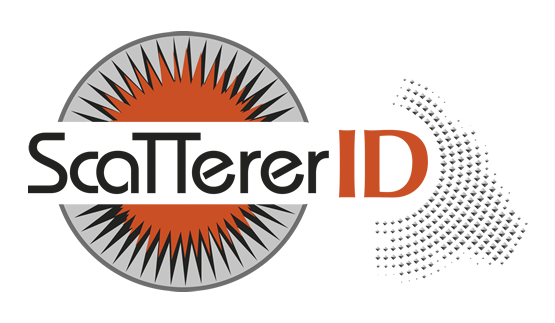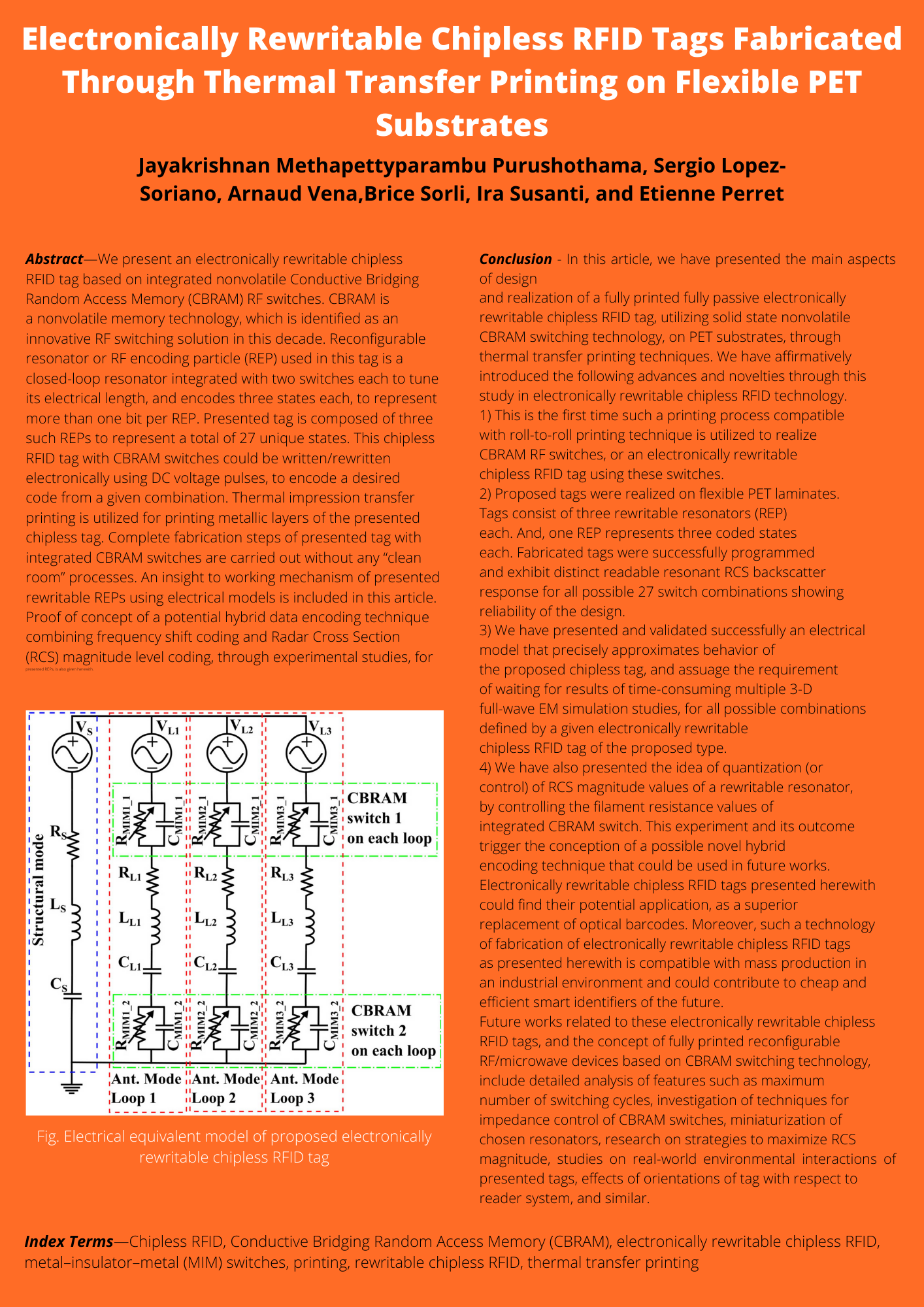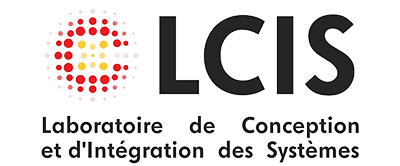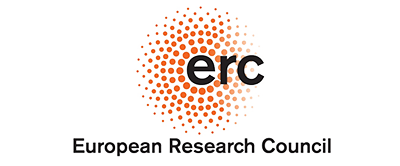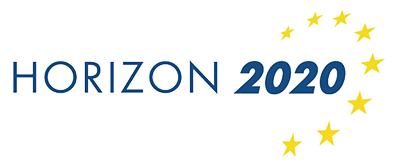Main Project Results
Consult some of the main results linked to the ScaTTererID project
Videos
Demonstration of Gesture Recognition Using Chipless RFID Tag Held in Hand
In this work [1], hand gesture recognition is presented by exploiting 3D localization using a depolarizing chipless RF identification (RFID) tag held in hand in front of monostatic radar. The chipless RFID tag is localized by utilizing the backscattered phase and multilateration. Based on the location of the tag in 3D, it is possible to detect different gestures made with the hand. Six simple gestures are presented to illustrate the principle. These hand gestures are recognized by doing the free space measurements in office environment: a) x line; b) y line; c) z line; d) xy circle; e) xz circle; and f) xyz helix. The system is capable to recognize hand gestures with good accuracy and hand speed.
[1] Z. Ali, N. Barbot, and E. Perret, “Gesture Recognition Using Chipless RFID Tag Held in Hand,” in Proc. IEEE MTT-S Int. Microw. Symp. (IMS), Denver, CO, USA, 2022.
Modelling of the Radiation Pattern of a Loop Resonator for Orientation Sensing (1)
This video presents the mono-static configuration, where only the azimuth angle is detected. In the video, on the left is shown the hand holding the resonator in front of the antenna (QH800). On the right is presented the real time estimated azimuth angle on a Matlab figure. The fixed green arrows represent the coordinates system. The black line corresponds to the loopresonator. The red arrow is orthogonal to the loop resonator showing the direction in which the resonator aims. In this experiment, several distances between the tag and the antenna were recorded. Also, the measurement is done in a real environment with the presence of humans nearby as well asscattering objects (humans hand, credit card, ...). No alignment (such as calibration measurements) between the antenna and the resonator is performed, the user just place its card above the antenna. We can see that the estimated angle (given in the top of the left window) is in good agreement with the movement of the user.
F. Requena, N. Barbot, D. Kaddour and E. Perret, "Orientation Sensing With a Loop Resonator Based on Its Re-Radiation Pattern," in IEEE Sensors Journal, vol. 23, no. 3, pp. 3159-3172, 1 Feb.1, 2023, doi: 10.1109/JSEN.2022.3231342
Modelling of the Radiation Pattern of a Loop Resonator for Orientation Sensing (2)
This second video was recorded in a bi-static configuration , where both the elevation and azimuth angles are extracted. The setup configuration is the same as before except the use of two antennas (QH2000) here. Due to the presence of the human and his hand near the resonator, it is not possible to obtain displacements as regular as those obtained in the monostatic configuration. However, it is possible to detect different positions of the tag. In the video, we can see that the user switches the card between two positions and the estimated angles relating to these positions are correctly detected.
F. Requena, N. Barbot, D. Kaddour and E. Perret, "Orientation Sensing With a Loop Resonator Based on Its Re-Radiation Pattern," in IEEE Sensors Journal, vol. 23, no. 3, pp. 3159-3172, 1 Feb.1, 2023, doi: 10.1109/JSEN.2022.3231342
